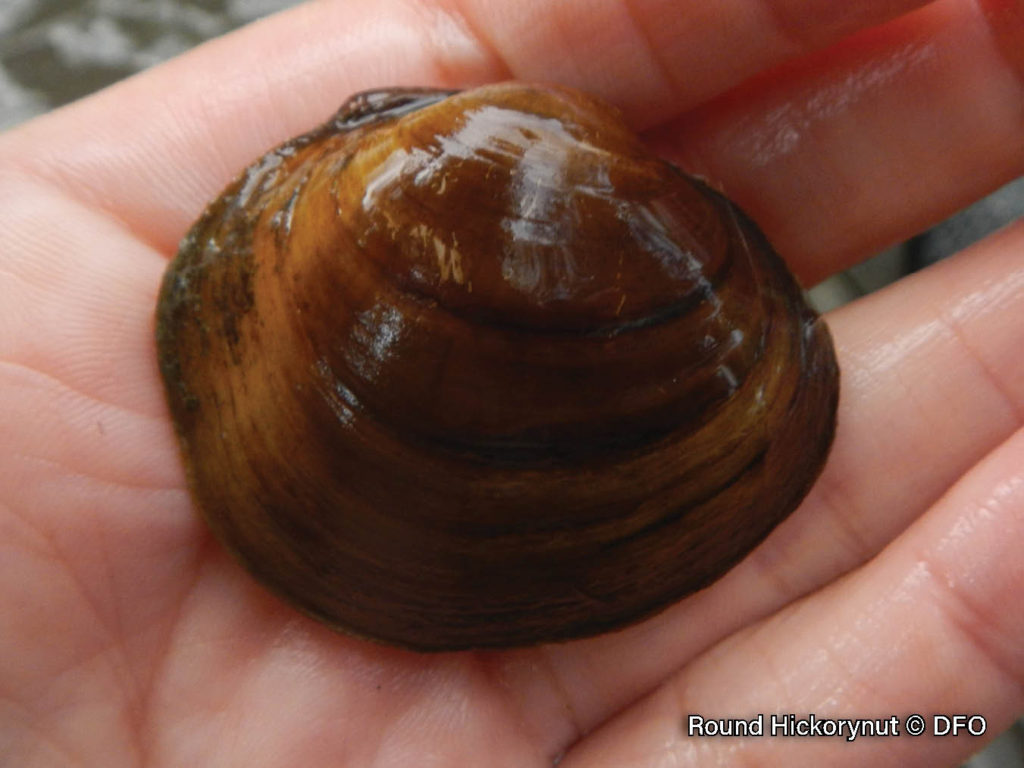Endangered mussels in the Shenango River: Protecting water quality ambassadors
By Krista White
Tucked in amongst the rocks and mud of the Shenango River, you’ll find Northern Riffleshell, Snuffbox, Round Hickorynut, Clubshell, Rabbitsfoot, and Pistolgrip. No, these aren’t the nicknames of famous gangsters, dance styles, or even old, discarded tobacco tins from the 1920s – these are endangered freshwater mussels located in the very river you fish, float on, or swim within.
The presence of thriving mussels or clams in a body of water is synonymous with water cleanliness. So, it’s no surprise that many mussel species around the globe are facing an uncertain future as water pollution levels continue to be a problem. The mussels in the Shenango River face the same threats.

In 2015, the Pennsylvania Game Commission published the Pennsylvania Wildlife Action Plan 2015-2025. Of the 11 listed greatest conservation need species accounts for freshwater mussels in the state, eight of those mussel varieties are in the Shenango River.
So, what exactly does endangered mean?
Depending on its status and the degree of threat it faces, a species gets listed under one of two categories: endangered or threatened. An “endangered species” is one that is in danger of extinction throughout all or a significant portion of its range. A “threatened species” is one that is likely to become endangered in the foreseeable future throughout all or a significant portion of its range (USFWS 2016).
These definitions come from the Endangered Species Act of 1973. The purpose of the ESA is to conserve endangered and threatened species and the ecosystems on which they depend as key components of America’s heritage (USFWS 2016).
Why are freshwater mussels important?
Mussels are important to a body of water because of their water filtration function, which includes the removal of sediment, algae, and bacteria from the water. This function improves water quality. The Pennsylvania Fish & Boat Commission’s Division of Environmental Services states that mussels are an early indicator of pollution problems. Freshwater mussels provide valuable services such as acting as “canaries in the coal mine” when monitored, providing an early warning indicator that something may be wrong in a watershed. These mussels also serve as a habitat and food source for other water-dwelling and shoreline species.
How are endangered mussels being protected?
Freshwater mussels are protected in Pennsylvania (Title 30 (Fish and Boat Code) Chapter 61.1, 61.2, and 61.3). Collection or harvest of live mussels – including invasive species – for bait or consumption is not permitted (PFBC 2016). In addition, the U.S. Endangered Species Act of 1973 prohibits possession of any part of an endangered species, including the shells of any federally listed mussel species. Over the last 15 years, the Shenango River Watchers have worked to remove 1.3 million pounds of illegally dumped trash from the river and the watershed, thus further increasing water quality to support species sustainability.
How can I identify them?
From oblong shapes to ripples to varying colors of brown, green, and yellow, the shells of freshwater mussels are as diverse as their names. For those looking for a more in-depth description of these freshwater mussels and pictures, check out the Pennsylvania Fish & Boat Commission’s Division of Environmental Services’ A Field Guide to Pennsylvania’s Freshwater Mussels provides a quick reference identification guide starting on pg. 15.
What should I do if I find a mussel in the river?
First, leave it where you found it. As stated above, it’s illegal to collect endangered freshwater mussels. Collection for scientific research is permitted only with a valid PFBC Scientific Collector’s Permit (PFBC 2016). While you can’t collect them, observing them is allowed and encouraged. Mussels can be observed from within the river, and shells may be seen along the banks.
How can I help?
PFBC is interested in your observations, particularly if you encounter rare species, an area of high mussel diversity, invasive species, or a recent die-off or mussel kill.
Information to collect:
1. Photographs of both sides of the mussel shell, and inside of the shell (if dead shell), including pictures
2. Wide-angle photographs of the sampling location
3. Locality information – stream/river name, nearest crossing or town, GPS coordinates (decimal degrees preferred), plus any other relevant information (access location, put-in/take-out, landowner contact, etc.).
Submit observation information to Nevin Welte (c-nwelte@pa.gov).
